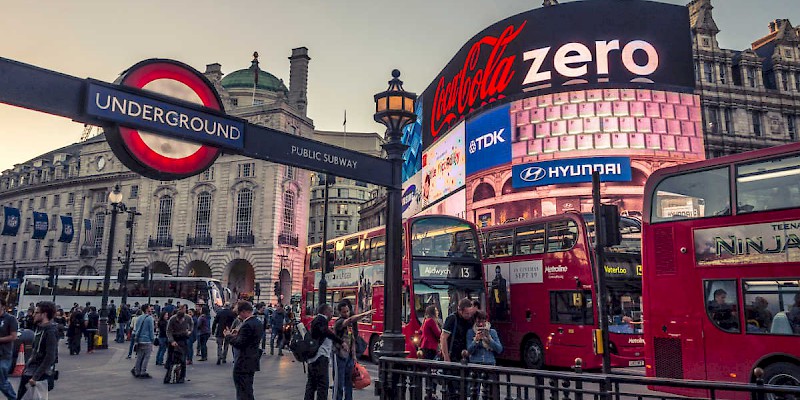Piccadilly Circus ★☆☆

The London equivalent of Times Square, a broad traffic circle bedecked in neon acting as the de facto center of the West End
I remember being sorely disappointed when I was 11 and, visiting London for the first time, discovered that Piccadilly Circus was really just the London equivalent of Times Square—a traffic circle around a fountain (the 1892–93 Shaftesbury Memorial Fountain, dedicated to a Victorian philanthropist and topped by a statue of Eros's brother, the Greek god Anteros), the sidewalks milling with tourists, the surrounding buildings armored in neon signs (a tradition since Perrier installed the first lit ad in 1908).
There were no elephants, no clowns, not even a big top.
Some circus.
Turns out "Circus" just means "circle"—as in "traffic circle"—which is exactly what Piccadilly Circus was designed to be (it actually used to be more circular, before Shaftesbury Avenue was run through it). John Nash inserted this wide spot in the road in 1819 as he laid out a grand processional route along Regent Street from Carlton House (the now-demolished 18C home of the Princes of Wales) to Regent's Park for the future King George IV. (The Haymarket, Coventry Street, and Glasshouse Street also feed into Piccadilly Circus.)
Since I was a kid, the phalanxes of neon signs have shrunk in number to just a single curving wall on the NW corner, and in 2011 the last of the neon was replaced with LEDs. The city also pedestrianized the south side of the circus in the 1990s, making even more room for us milling tourists and less for the traffic.
As for the "Piccadilly" part of the name, that's more interesting. It was borrowed from the name another major road feeding into the circus. Piccadilly, the road, drew its name from Pikadilly Hall, the grand home built along it by Robert Baker sometime after 1612. Baker was a prosperous merchant who made his fortune selling piccadills, those ludicrously wide, lacy collars you see in portraits of Elizabethan muckety-mucks like Queen Elizabeth I or Sir Francis Drake—you know, the ones that make it look like they just got back from the vet and aren't supposed to lick their stitches.
Tips
Given the convenience of its Tube station, you are likes to emerge onto Piccadilly Circus more than once and walk through it. That will be plenty of time (though do make an effort to see it at night).










